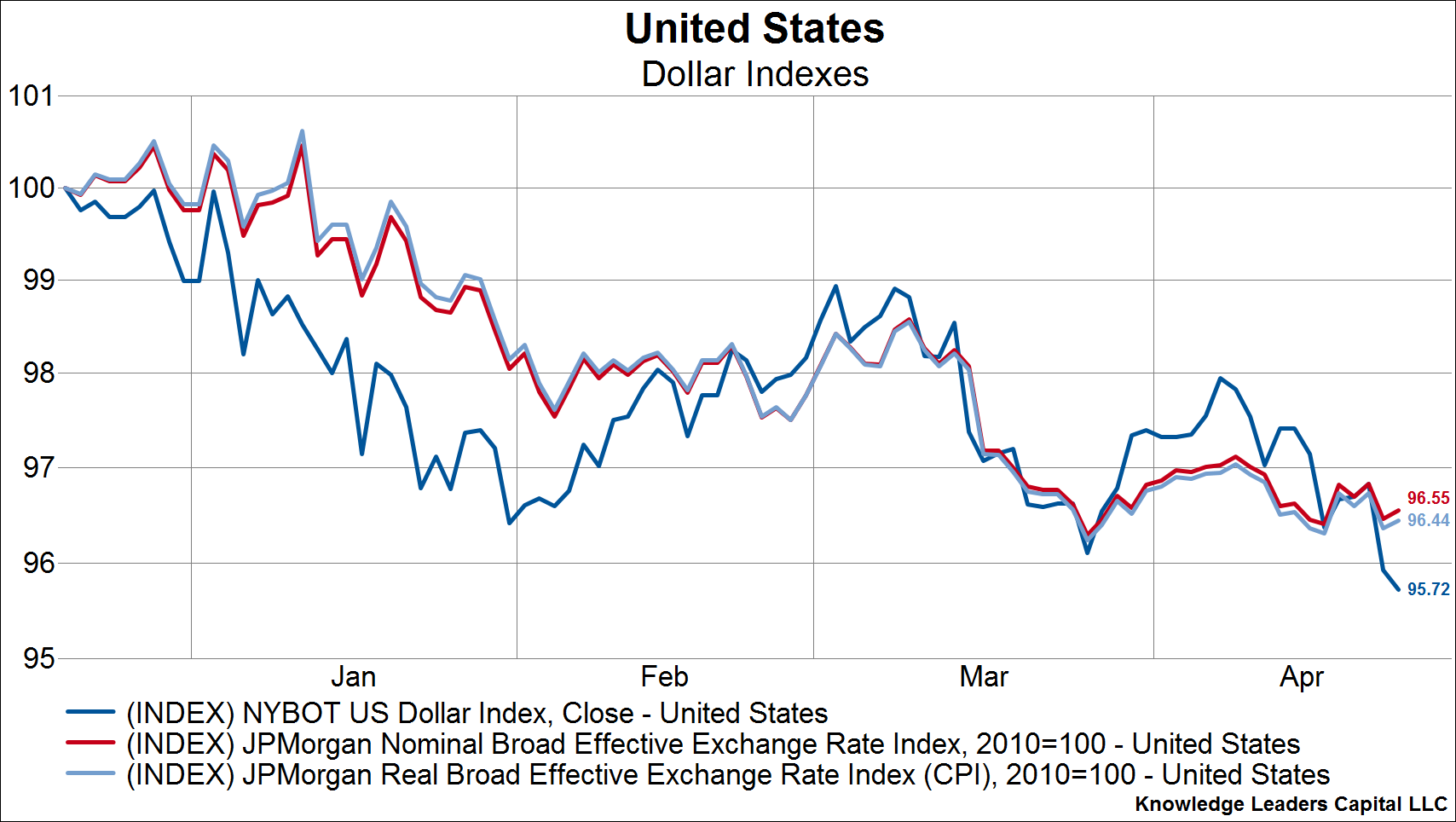
Authored by Bryce Coward via Gavekal Capital blog,
Since the beginning of 2017, the US dollar has struggled against nearly every major currency, calling into question the idea that the US dollar is still in a bull market. Indeed, since the dollar made its cyclical high on the first day of 2017 trading, it has put in a series of lower highs and lower lows no matter how you measure it (chart 1).
The possible trend change is no doubt aided by President Trump and several of his cabinet members making public statements to the effect that the US dollar is “too strong”. We’d also remind readers that any sort of deficit spending is likely to be financed from foreign sources, since US domestic savings is already at a low level. Such a scenario would add to the pressure on the dollar (chart 2).
[image]https://blog.knowledgeleaderscapital.com/wp-content/uploads/2017/04/Pic3-5.png[/image]
So the question now becomes, if the USD bull market is over, what does that mean for my portfolio? The answer to this question is relatively simple. When the USD rises, US stocks tend to outperform foreign stocks in USD terms. When the USD falls, US stocks tend to underperform foreign stocks in USD terms.
[image]https://blog.knowledgeleaderscapital.com/wp-content/uploads/2017/04/Pic2-4.png[/image]
Therefore, if we have indeed seen a peak in the US dollar – as the charts would suggest and the US government would like to affect – we’ve likely just seen the beginning of foreign equities outperforming US equities after a decade of the opposite occuring.